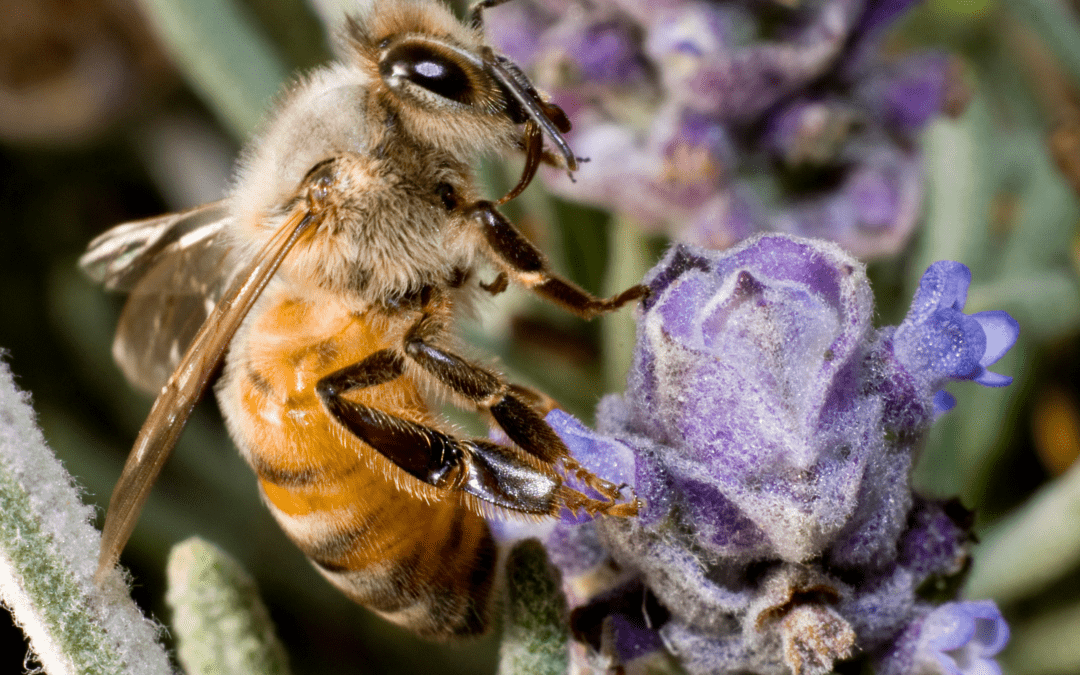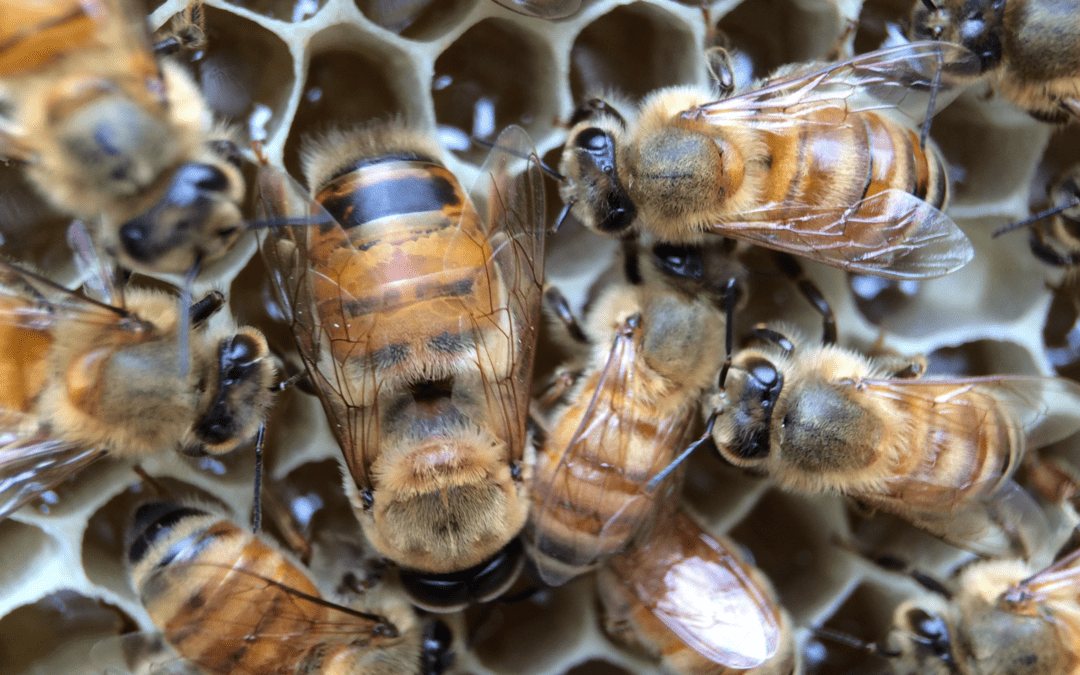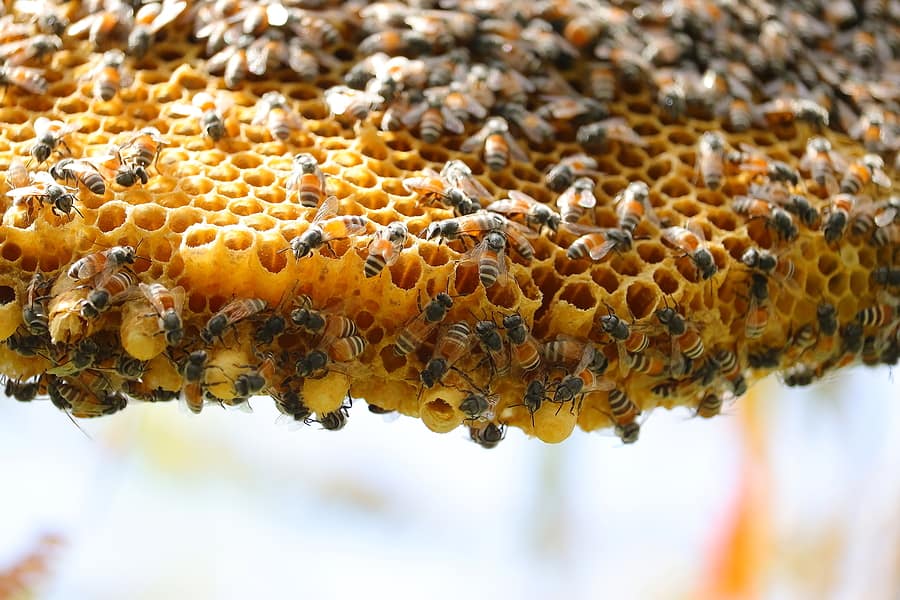READY TO GET STARTED?
REQUEST A FREE ESTIMATE
Fill out the form below or call (888) 466-7849 for a free, no-obligation estimate.

Bees are some of Georgia’s most essential pollinators, yet they face increasing threats from habitat loss, pesticides, and climate change. For homeowners looking to cultivate beautiful and eco-friendly gardens, planting bee-friendly plants can provide a non-toxic environment for these critical pollinators, all while enhancing the vibrancy of backyard spaces.
This blog explores the best bee-friendly plants for Georgia gardens, including native flowers, beneficial herbs, and flowering trees and shrubs. Whether you’re a seasoned gardener or just starting your green-thumb journey, these plant recommendations will help you create an inviting habitat that supports pollinator health.
Before we dig into plant recommendations, it’s important to highlight why bee-friendly gardens matter:
By including the right plants, you enable bees to thrive while also enjoying a more stunning, productive backyard. Now, let’s explore the best options for your Georgia garden.
Georgia’s climate is rich in biodiversity, making it an ideal environment for native flowers. These plants naturally thrive in the region’s soil and climate while offering crucial resources to native bees.
Purple Coneflower is a favorite among gardeners and pollinators alike. With its daisy-like petals and vibrant purple hue, this perennial attracts numerous bee species, including bumblebees and carpenter bees. It’s hardy, drought-resistant, and blooms throughout summer, providing lasting nourishment.
Known for its golden-yellow petals and dark centers, Black-Eyed Susan is a pollinator magnet. These vibrant flowers not only attract bees but also support butterflies and songbirds.
Coreopsis, often called “tickseed,” is a cheerful perennial that thrives in Georgia gardens. Bees love their bright yellow flowers, which bloom prolifically when exposed to full sunlight.
Lavender serves a dual purpose in gardens, offering a soothing fragrance to humans and a rich source of nectar to bees. Its tall, purple flowering spikes are irresistible to a variety of pollinators.
While most people grow basil for its culinary uses, it’s also a bee-loving herb if allowed to flower. Its small clusters of white or purple blooms provide nutrients for pollinators throughout the season.
Rosemary’s evergreen foliage and tiny blue blooms make it a favorite in Georgia gardens—both for pollinators and gardeners. Its flowers can appear even in winter, providing much-needed nectar during colder months.
Flowering trees and shrubs create a stunning visual centerpiece in your yard while offering significant benefits for pollinators. These larger plants serve as vital food sources and shelter for bees in your region.
One of Georgia’s most beloved native trees, the Redbud graces gardens with its vibrant pink blossoms in early spring. Its flowers are among the first food sources for bees after winter hibernation.
The Tulip Poplar, often referred to as the “bee tree,” features distinct yellow-green flowers that are highly attractive to bees. This towering tree is a staple for pollinators looking for abundant nectar.
Nothing captures the beauty of Southern gardens quite like the Southern Magnolia. Its large, fragrant white blossoms are not only a visual feast but also a rich nectar source for native pollinators.
After selecting the right plants, the following tips will ensure your Georgia garden remains a bustling bee haven:
By implementing these practices, you’ll create not just a beautiful garden, but a thriving ecosystem that supports pollinators in the Georgia region.
Bee-friendly gardening is more than just a trend—it’s an investment in the environment and the future of pollinators. By planting native flowers, herbs, and flowering trees and shrubs, you’re building a sanctuary for bees while enjoying vibrant blooms, fragrant herbs, and a healthier landscape.
If a beehive has ended up in an unwanted place on your property, our honeybee experts are here to help! Contact our team for eco-friendly pest control solutions to protect both your home and these essential pollinators.

When you’re planning and planting your garden this year, every homeowner should consider adding some plants that attract honeybees to your yard. Allowing honeybees to enter your yard can help assist them with the very important job they have – pollinating. Honeybees alone can pollinate up to 80 percent of all flowering plants, including fruits and vegetables. It’s vital to give them the space they need to complete this task.
Honeybees have incredible ultraviolet vision. They are unable to see the color red but can see colors that are on the ultraviolet spectrum. They can also use odor cues to locate flowers nearby. Many flowers attract bees, including bee balm, echinacea, snapdragon, hostas, and evening primrose. Continue reading to discover which flowers you should plant in your garden next.
These are just a few of the flowers that attract honeybees to your garden to help elevate pollinating. Making sure honeybees have a place to work is important for all humans and the environment. Even planting just one of these plants in your yard is enough to assist the bees.
If you notice a bee colony is nearby and needs to be moved to a safer location, then reach out to your local pest control company that can provide a safe bee relocation.

At Northwest, we know how important all bees are and we understand just how fragile their ecosystem truly is. Our Honeybee Relocation Program is designed to protect these important pollinators, while also protecting you and your family.
If you see an increase in bee activity near your home, contacting a local relocation service is the first step in protection. What happens during these relocations, though? Many important steps occur during the honeybee relocation process to ensure the safety of all bees. Keep reading to discover how this process works.
Inspecting & Locating
The very first step after contacting a bee relocation service is the inspection of the hive location. Our honeybee experts complete a home inspection to help identify the type of bee and determine how the hive is holding up. This inspection helps the team determine the best plan of action for the safest removal possible.
Honeybee Removal
After determining where the hive is located, the removal process begins. The team carefully removes the honeybees from their hive. After the bees have been removed, the team will then remove the hive. Depending on where the hive is located, our team decides which method is needed in the hive removal process.
Honeybee Relocation
The relocation process is the next step, and some say it’s the most important step in the whole process. Honeybees benefit from being relocated in many ways, including preventing further infestations, and it helps preserve plant reproduction. The bees that we help are relocated to a local beekeeper’s farm to continue pollination and honey production. Relocation is a way for their local honey to be enjoyed by the community, helping aid humans against seasonal allergies.
If you believe you have a honeybee hive on your property and it’s closer than you would like it to be, then reach out to your local bee relocation company and they will be able to assist you in the relocation of these beneficial insects.

Honeybees are extremely beneficial to our entire environment for their role in pollination. These bees help with the growth and reproduction of plants and each bee can pollinate more than 100 crops! It’s important to understand why these insects are important and how we can best protect them moving forward.
There are three types of honeybees: adult workers, drones, and the queen. The adult worker bees, who are all female, are all infertile. Their main role in the colony is to collect pollen and nectar. The worker bees do have barbed stingers and, while they aren’t typically aggressive, they will sting if they feel threatened. Drones are male bees and do not have stingers, nor do they collect nectar. Their primary role is to mate with the queen bee. Queen bees are slightly larger than worker bees. The queen bee plays a vital role in the bee colony, as she is the only bee who can produce more honeybees.
Honeybees are active pollinators and will produce honey. Since these insects are the only social insects, their colonies can survive for many years, with an individual colony containing anywhere between 20,000 to 80,000 bees. If the colony’s size gets too large for the available hive space or the queen begins to fail, the bees will start swarming. While these bees aren’t aggressive, they will attack when they feel like their colony is being threatened.
The production of honey by honeybees is extremely important to the environment. Since honey does not have an expiration date, it can be used and reused several times. Honey also has medical benefits, from healing burns to fighting some allergies. Honeybees, as we know, help pollinate crops, which in turn helps us produce and reproduce the plants and food we use to survive.
While bees have positive effects on our environment, some people can be a little wary of them on their property. Protecting these insects is crucial, and it’s recommended that the first and only treatment for these bees is removing and relocating them and their hives by local beekeepers. If you notice you have a honeybee colony on your property, reach out to a pest control company that can provide safe relocation for these insects.